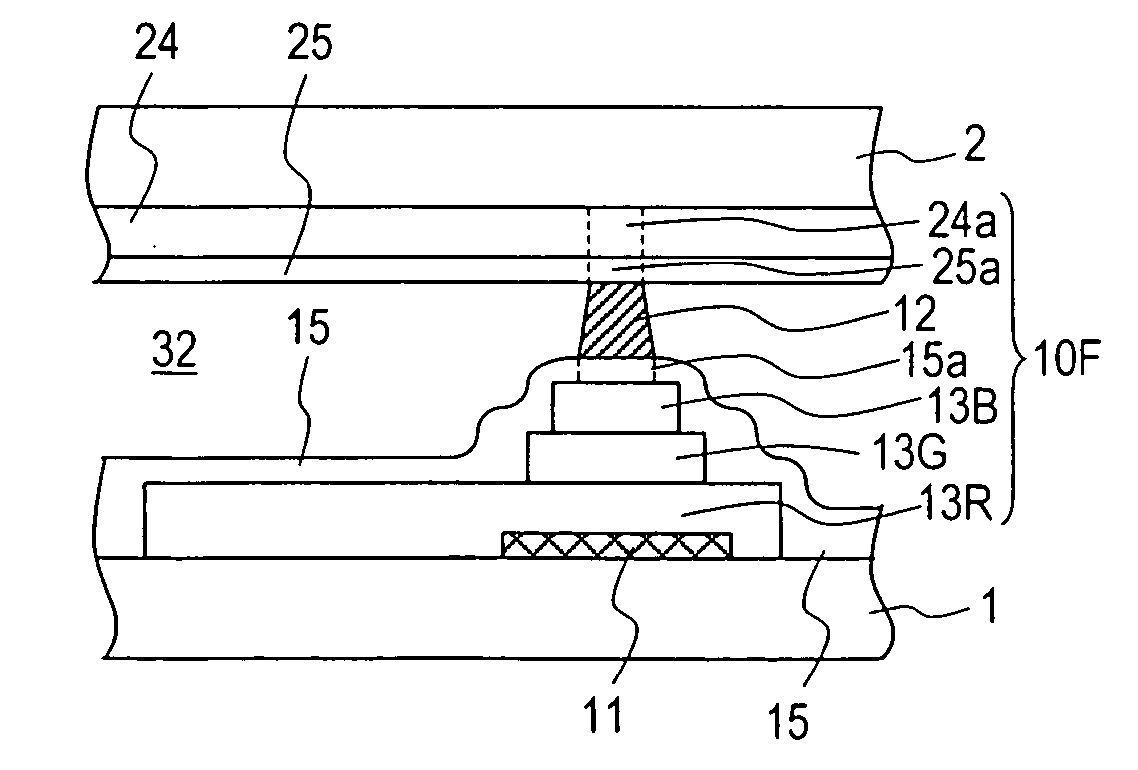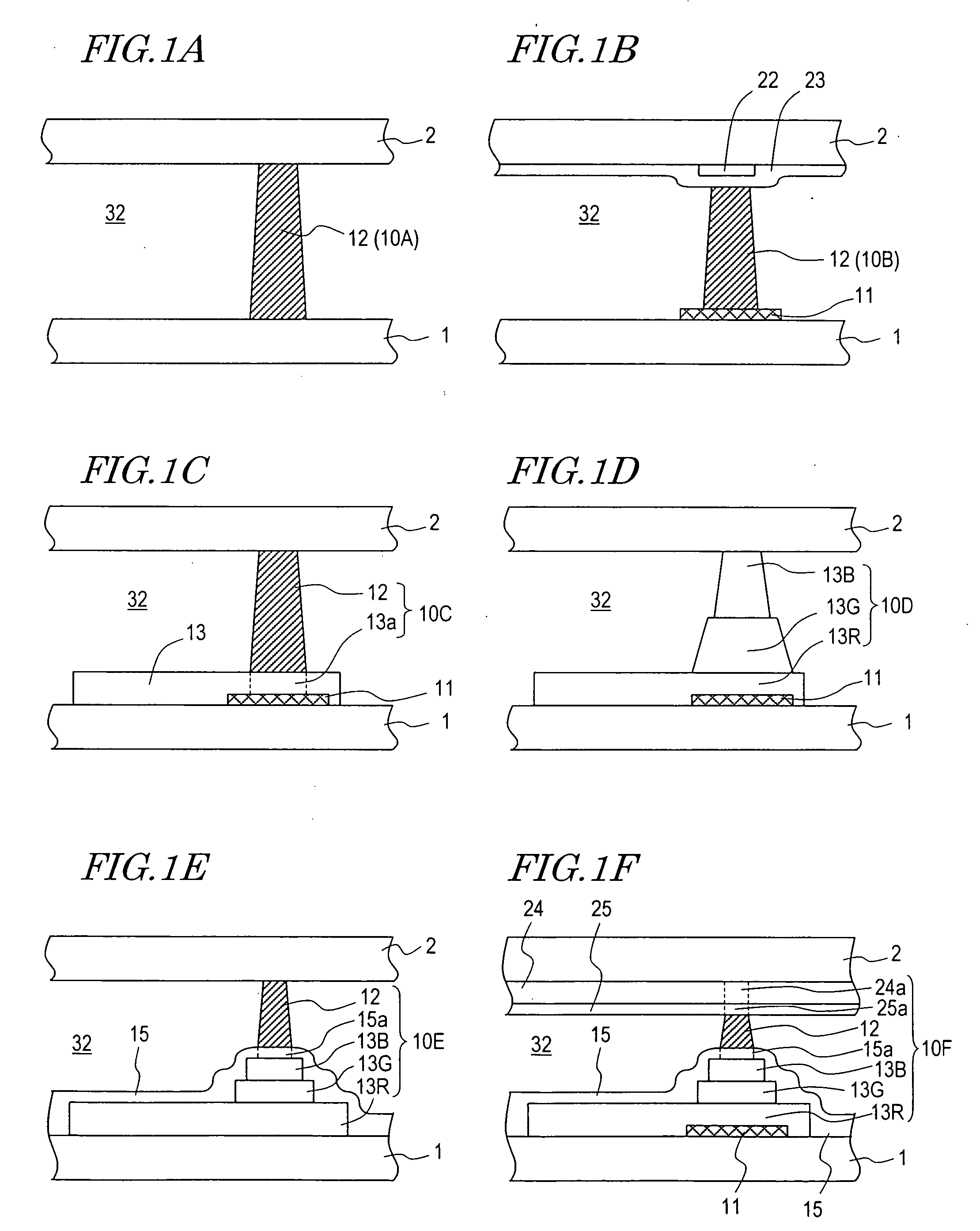Liquid crystal display device and substrate to be used for liquid crystal display device, and methods for producing the same
a technology of liquid crystal display and substrate, which is applied in non-linear optics, instruments, optics, etc., can solve the problems of uneven display, affecting the orientation of liquid crystal molecules in each pixel, and plastic beads spreading cannot control the position, etc., and achieves the effect of suppressing pressure-induced unevenness, good display quality and low bulging
- Summary
- Abstract
- Description
- Claims
- Application Information
AI Technical Summary
Benefits of technology
Problems solved by technology
Method used
Image
Examples
Embodiment Construction
[0045] Hereinafter, a liquid crystal display device according to an embodiment of the present invention and a method for producing the same will be described with reference to the accompanying drawings. Since the method for producing a liquid crystal display device according to an embodiment of the present invention is mainly characterized by the optimization of the configuration and distribution density of columnar spacers, the configuration and distribution density of the columnar spacers will be described first.
[0046] By using various materials as described later, the inventors have conducted studies on preferable configurations and distribution densities of the columnar spacers, thus finding that, in order to suppress “low-temperature voids”, “lower bulging”, and “pressure-induced unevenness”, it is necessary for the liquid crystal display device (liquid crystal panel) to have preferable deformation characteristics. The inventors have also found that the deformation characteris...
PUM
| Property | Measurement | Unit |
|---|---|---|
| width | aaaaa | aaaaa |
| temperature | aaaaa | aaaaa |
| transmittance | aaaaa | aaaaa |
Abstract
Description
Claims
Application Information
 Login to View More
Login to View More - R&D
- Intellectual Property
- Life Sciences
- Materials
- Tech Scout
- Unparalleled Data Quality
- Higher Quality Content
- 60% Fewer Hallucinations
Browse by: Latest US Patents, China's latest patents, Technical Efficacy Thesaurus, Application Domain, Technology Topic, Popular Technical Reports.
© 2025 PatSnap. All rights reserved.Legal|Privacy policy|Modern Slavery Act Transparency Statement|Sitemap|About US| Contact US: help@patsnap.com



